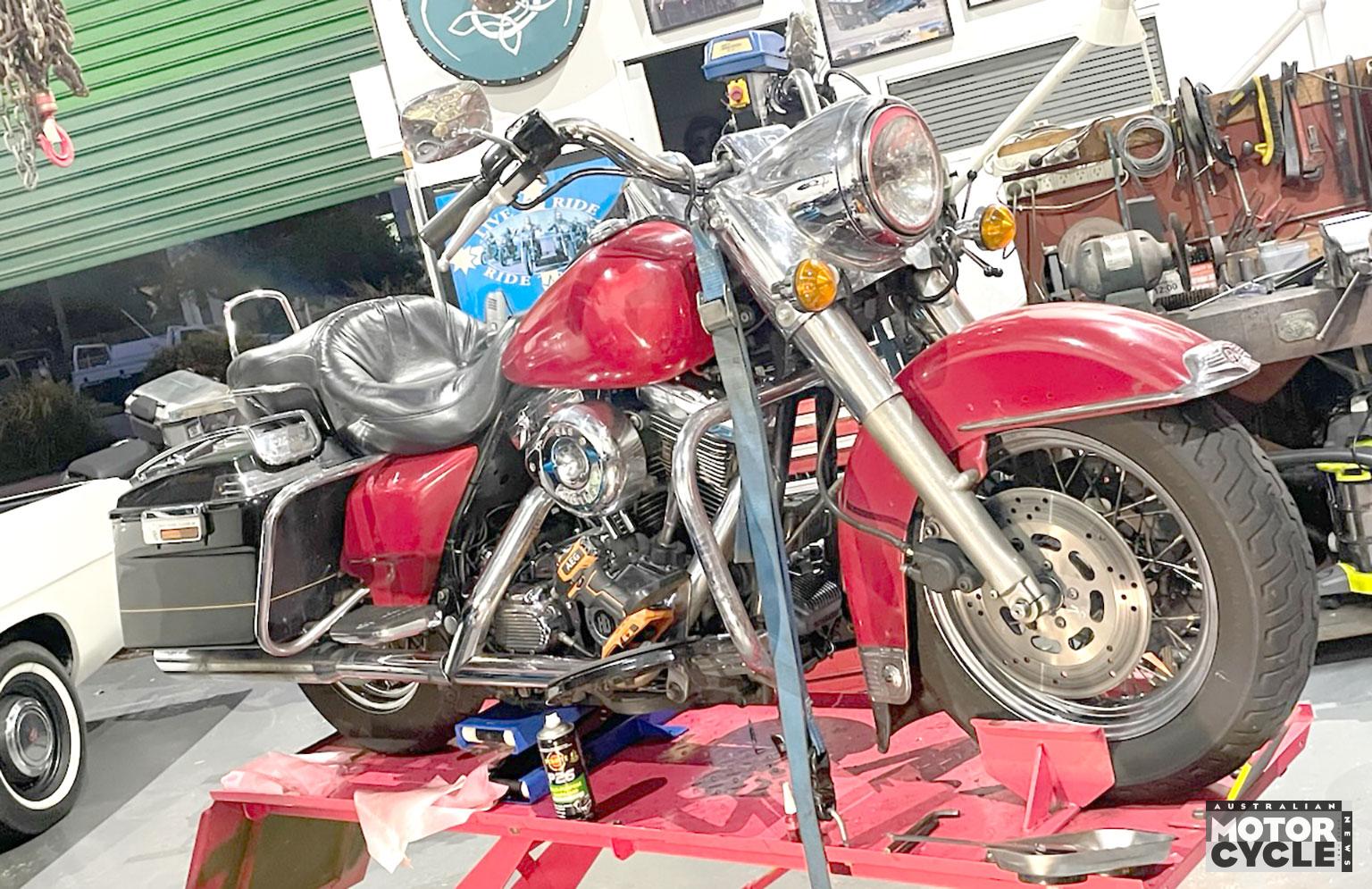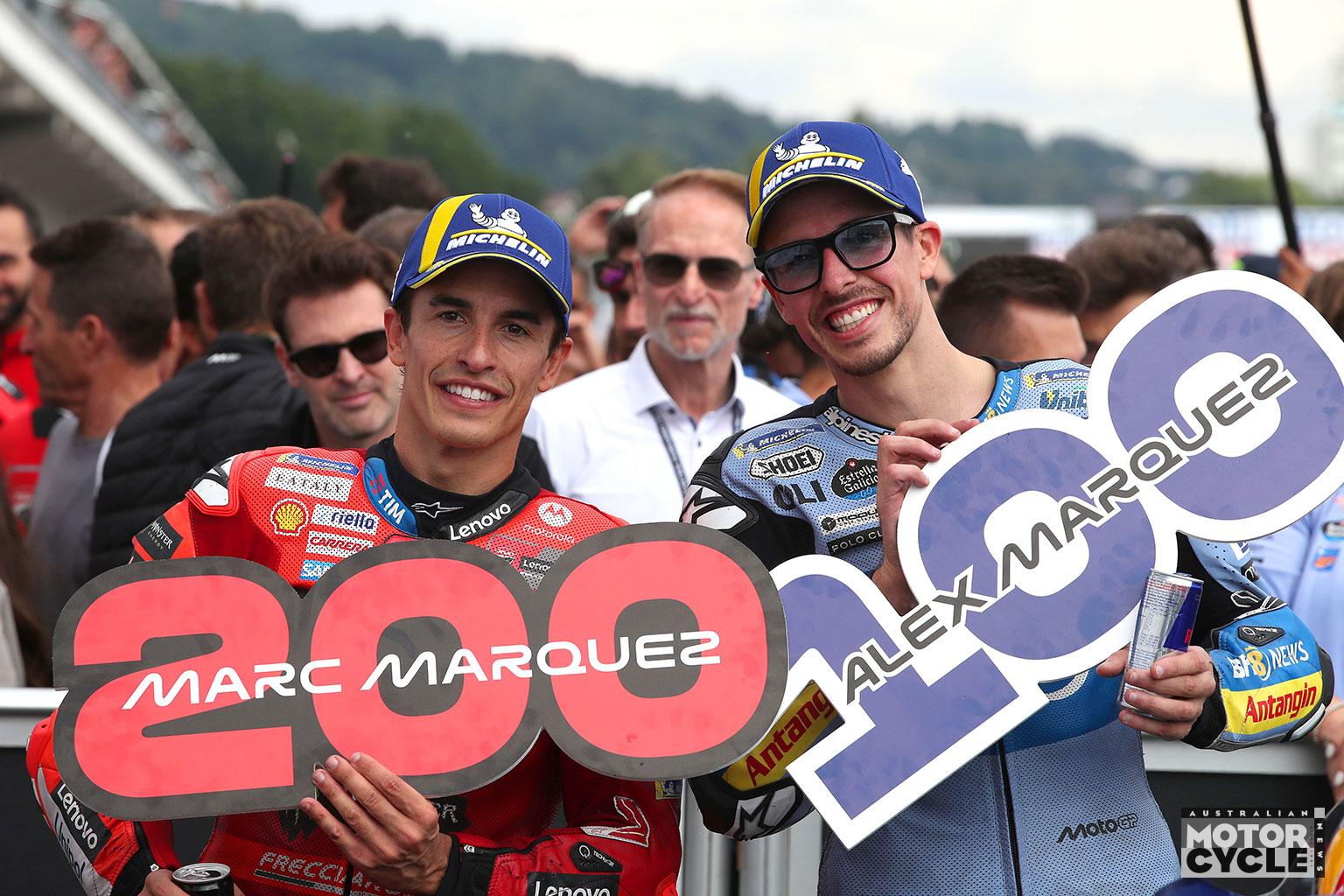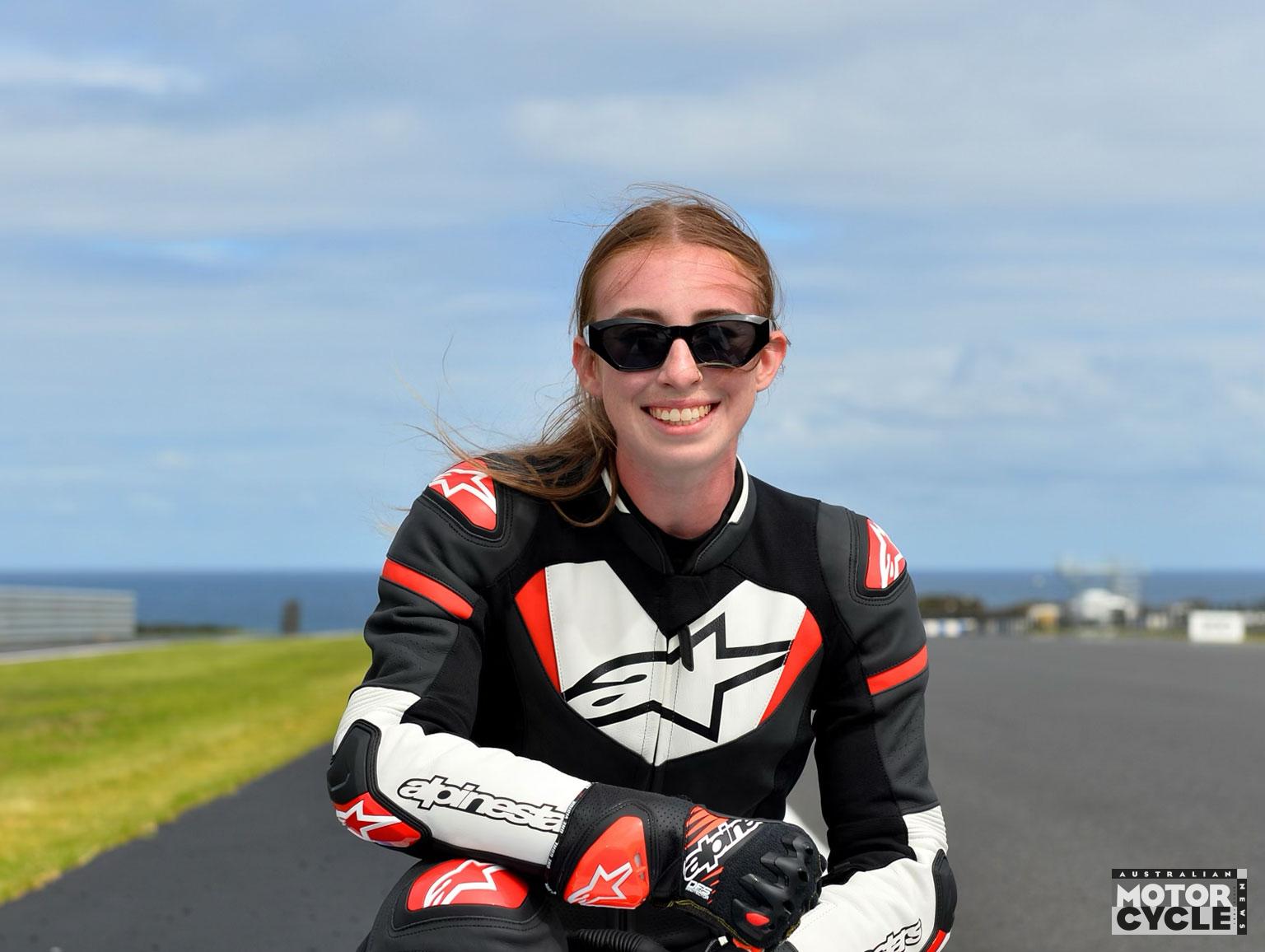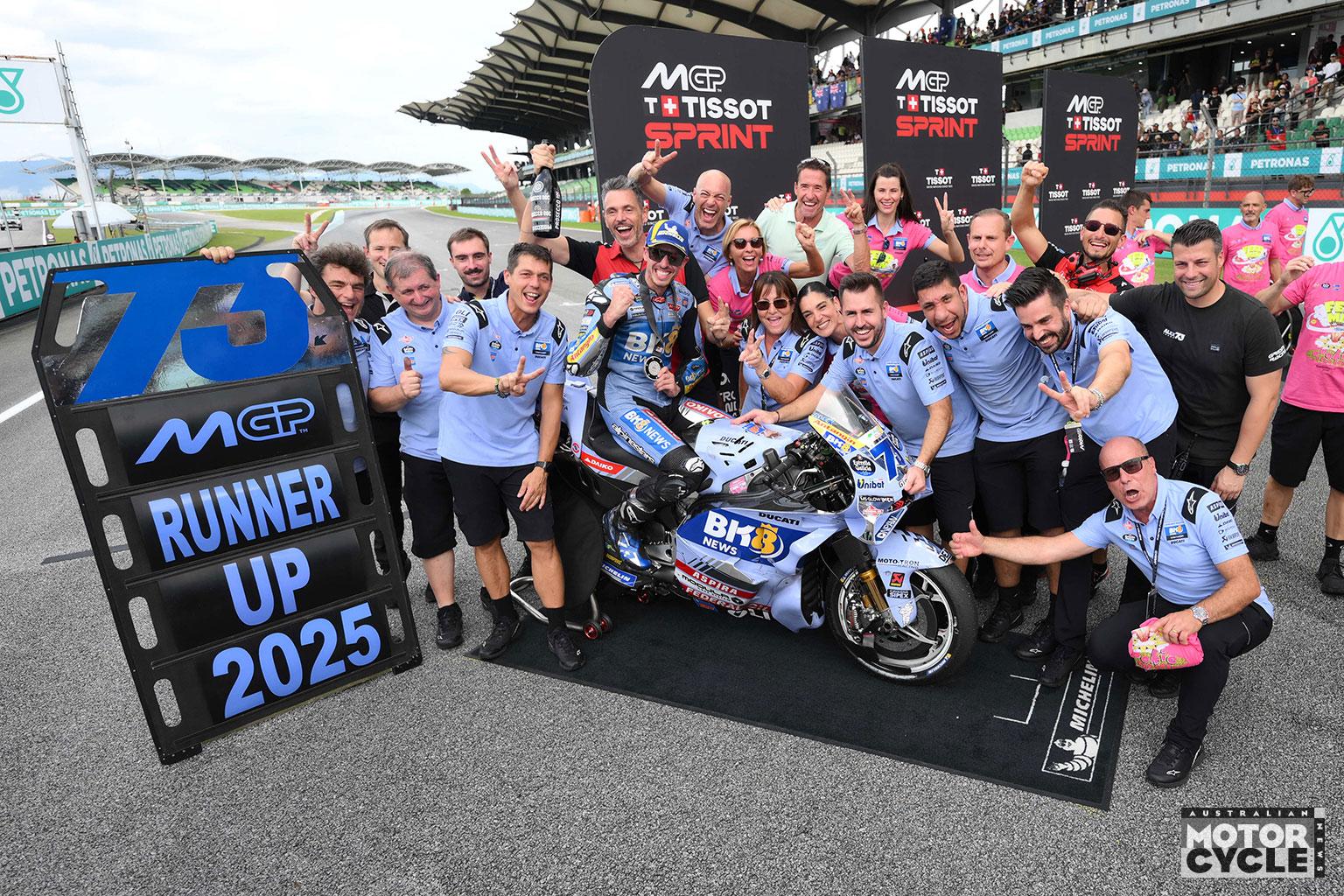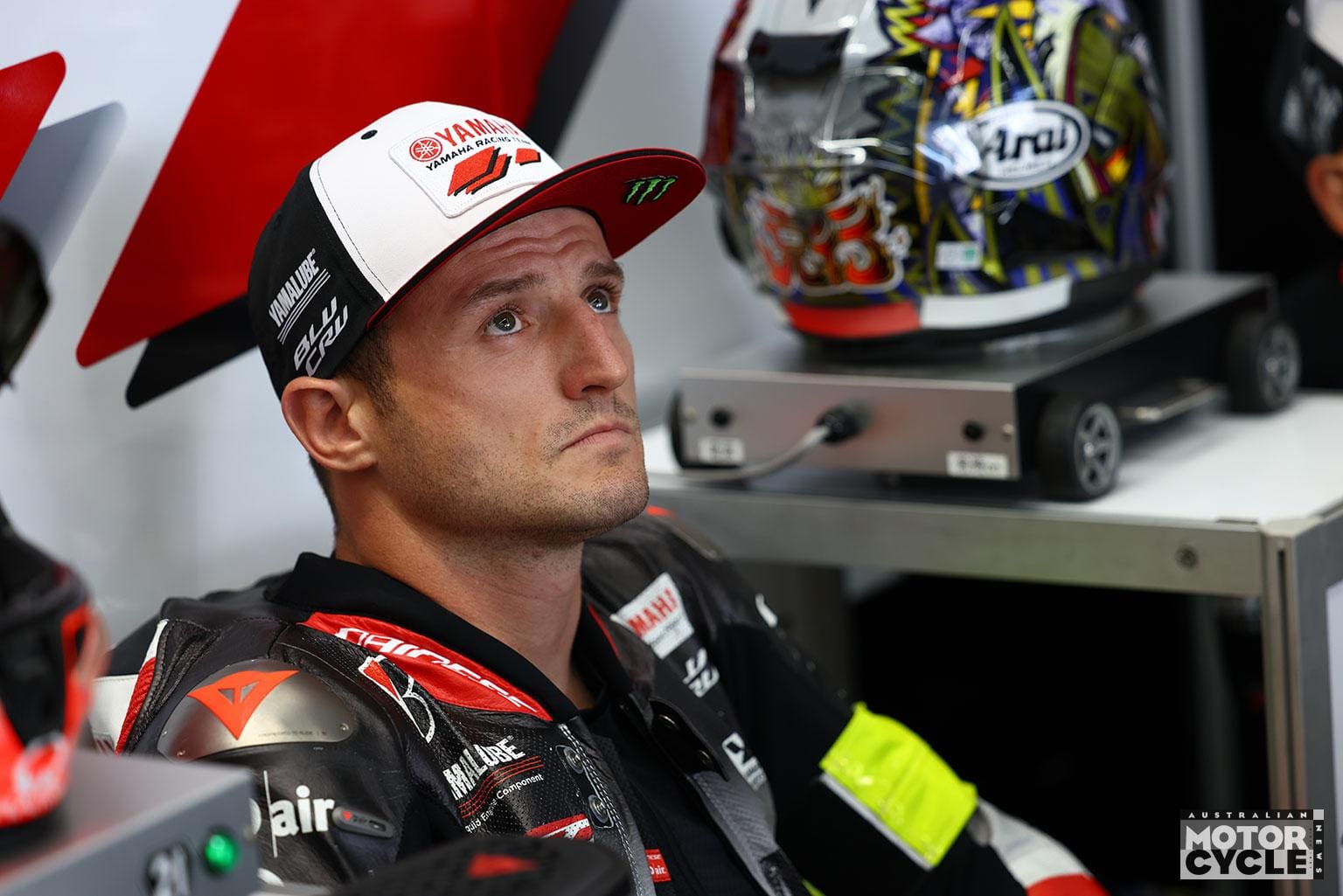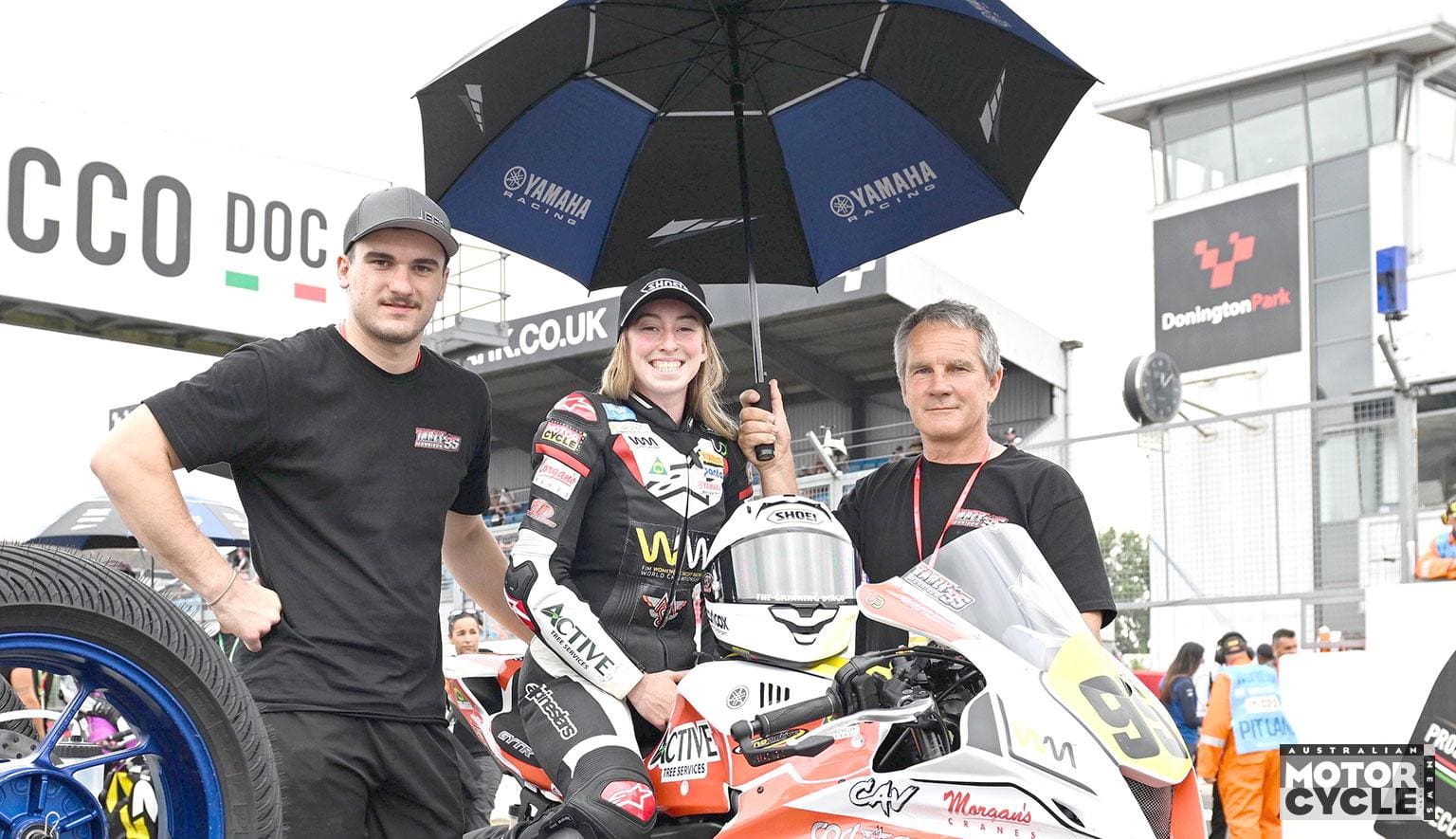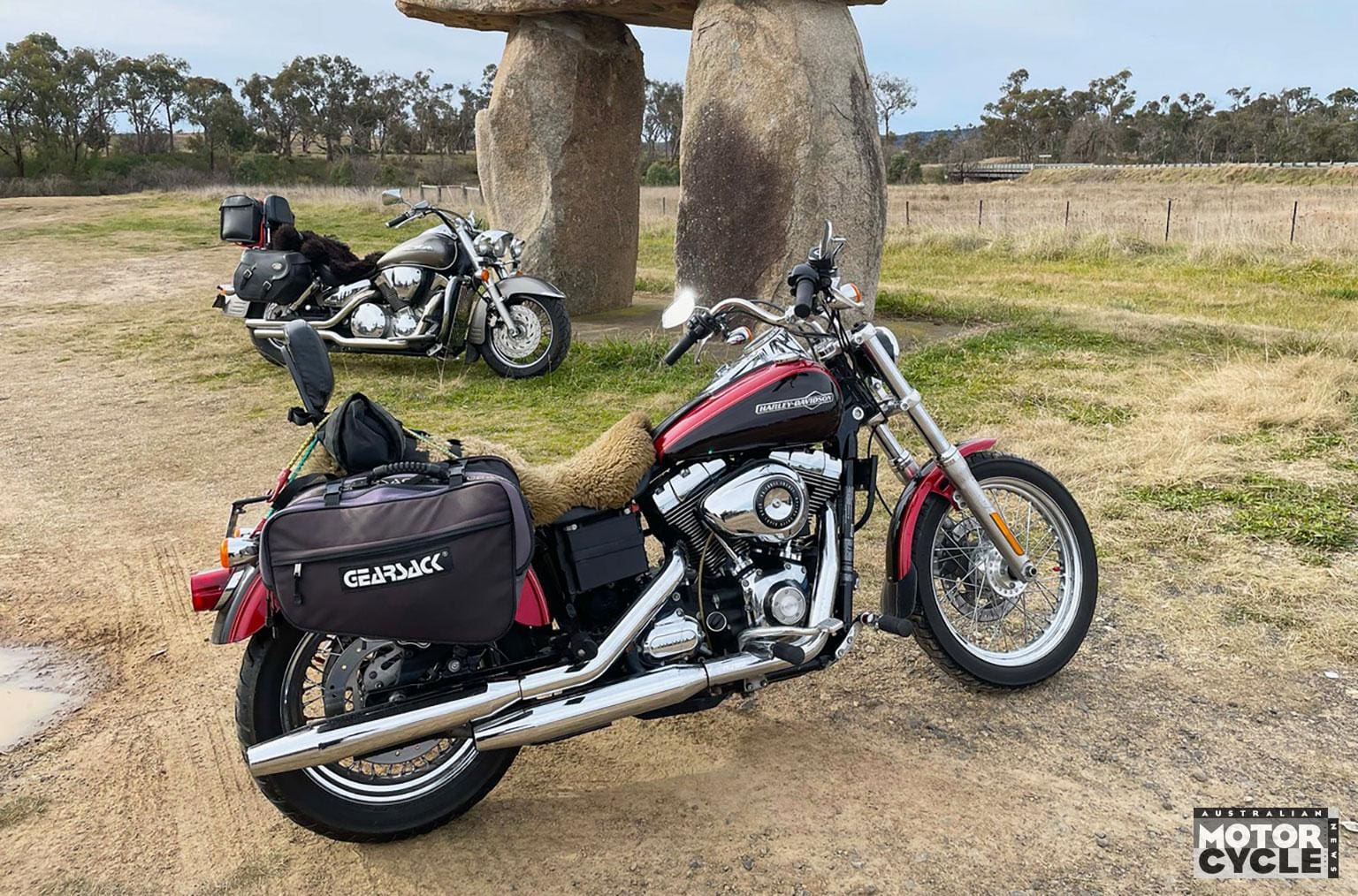We interview Brodie Waters about tackling the Finke and Hattah this year while juggling ASBK crew chief commitments for older brother Josh Waters.
Can you give us the run down on your two-wheel career so far?
I finished road racing in 2012 – except for a few rounds of World Supersport in 2013. If it wasn’t for helping Josh in ASBK I probably wouldn’t have anything to do with road racing. But when he returned from Europe in 2016, he needed someone to help out in the garage – I build race engines on the side, still.
In 2013 I did a little bit of speedway and Leigh Adams convinced me to take it further. I enjoyed it but it got to the point where I had to head to England to take my career further, and that just wasn’t realistic.

So that led you to jump on a dirtbike again?
Yeah, at the start of 2017 I bought myself a new dirtbike and decided to race Hattah that year as a bit of fun, because it’s our local desert race. I came 13th, then a few local guys from Mildura convinced me to go and try Finke and I haven’t looked back.
To prepare for Finke I do a lot of trail riding, but our trail riding is maybe different to other people’s trail riding. It’s 150-160km/h down fire trails at full noise. I enjoy that with my mates and we do that most Sundays. We can go out for a few hours, come home, give the bike a quick wash and oil change and you’re right to go again. It works in easier with [my job in] the building business and my kids, plus the enduro scene is very family oriented.
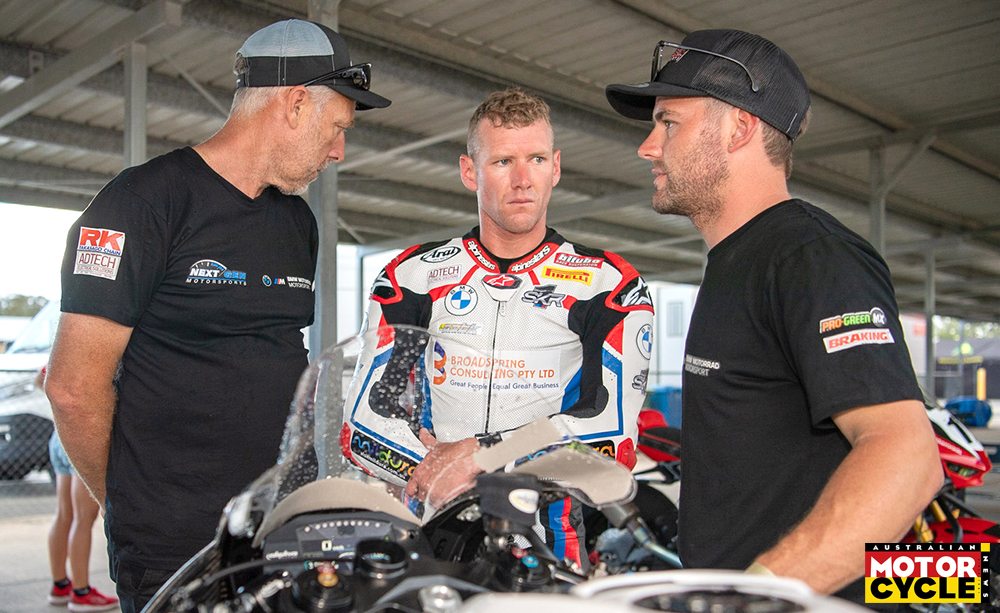
Tell us about the demands of Finke? What level are you riding at?
I used to say I’d ride at about 85 percent, but everyone is at such a high level I think that has increased. You’re riding in that 85-90 percent range the whole way – it’s very mentally tough. This year I left with David Walsh, but by the 10km mark I couldn’t see him and I didn’t see another bike for the next 220 kilometres – you’re riding by yourself, literally just ‘out there’.
I use the fuel stops to break the race up into sections – that’s the best way I find I can maintain focus, keep pushing and remember where I am on track. A lot of the hills look similar, but some you can hit at full throttle whereas others you have to remember to back off because there’s a big drop off or they might be whooped out. Course knowledge is key for Finke.

You started the race with eventual winner Walsh, did you see where he was faster?
I don’t think he had a faster bike – just a bigger set of knackers! From the lines he takes – you can tell he knows where he is going like the back of his hand. For my pre-runs I have six or seven days allocated – it’s a limited amount of time to learn the track which means I have to race up and down reasonably fast. The advantage you gain with allocating more testing time is that you can take your pre-running much slower, to understand the track better and look for better lines. Walsh has raced Finke for 13 years or something – that also helps. He’s such a fast rider and it puts him on another level to the rest of us right now.
I noticed you ran Öhlins on the KTM 500, which seems risky?
This year I picked up sponsorship from Öhlins – it was a complete unknown because nobody runs that combination. I know from road racing that Öhlins is a top product but we still went up there early to get it set up properly. Byron [Draper] hadn’t been to Finke or even worked on an off-road race before and I was aware people were watching to see if we failed, I was a bit anxious to make it work right. On my first pre-run the track was in bad shape, but I did a reasonable time with the Öhlins gear straight out of the box. That gave me a lot of confidence. I flew back to Wakefield Park for ASBK testing, then back to Alice Springs where I was joined by Byron and Ben Grabham for four days. Ben helped with coaching and set up, he knows what a good bike is meant to look like at Finke and having those two in the team helped speed up development. From day one we had a good base setting, and we were lucky to not have to change much before the race. The results have made us really excited to see where we can take that combination.
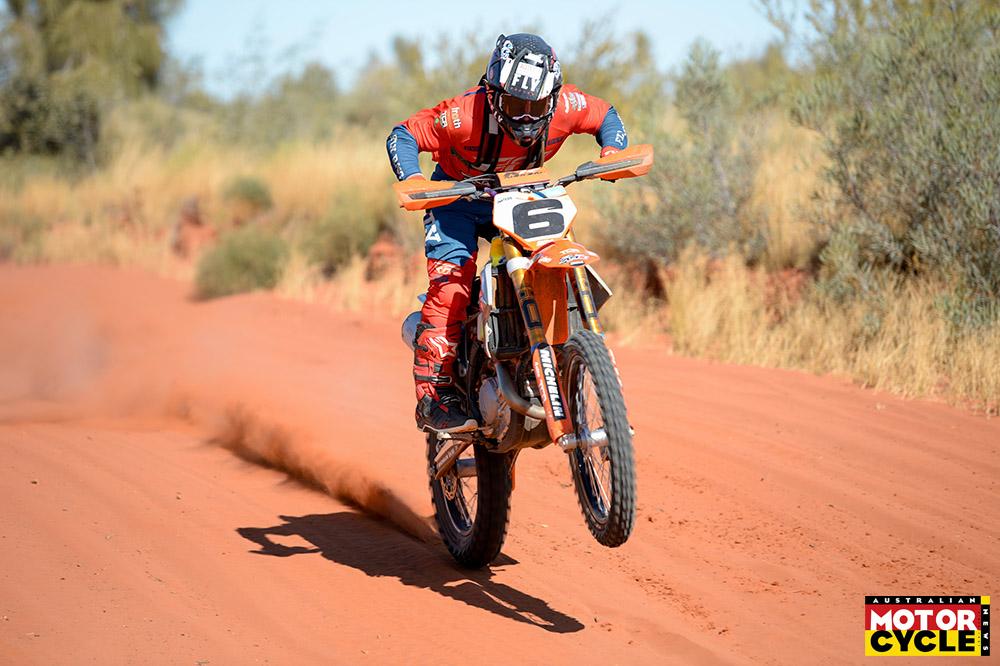
Do you make many setup changes between Finke and Hattah?
Not as much as you might imagine. At Finke, you don’t run the bike as fast as what people think you might, you can over gear them. Everyone pretty much runs the same gearing and the KTM 500 is fairly short in the gears from first to fourth, but fifth and sixth is fairly tall. It works out quite well and makes it a good all-round bike. It also means [teammate and brother] Nick and I can use the same wheels because the sprockets are the same. At Finke you’ve really got to gear the bike for the whoops – and the reality on race day means you run low rpm in sixth or back to fifth gear – that keeps the bike more planted and straight.
Are you standing on your pegs all day?
Yep, you feel it in the backs of your legs at Finke, it’s like doing a squat all day! Your lower back is what gets really sore though, from standing up and holding the position.
Hattah is a big four-hour motocross race, really. It’s like trying to compare a cycling race to a running race – they are both races but they are totally different. Hattah is way more physically demanding. But you don’t have to be the fittest person to do well at Finke.
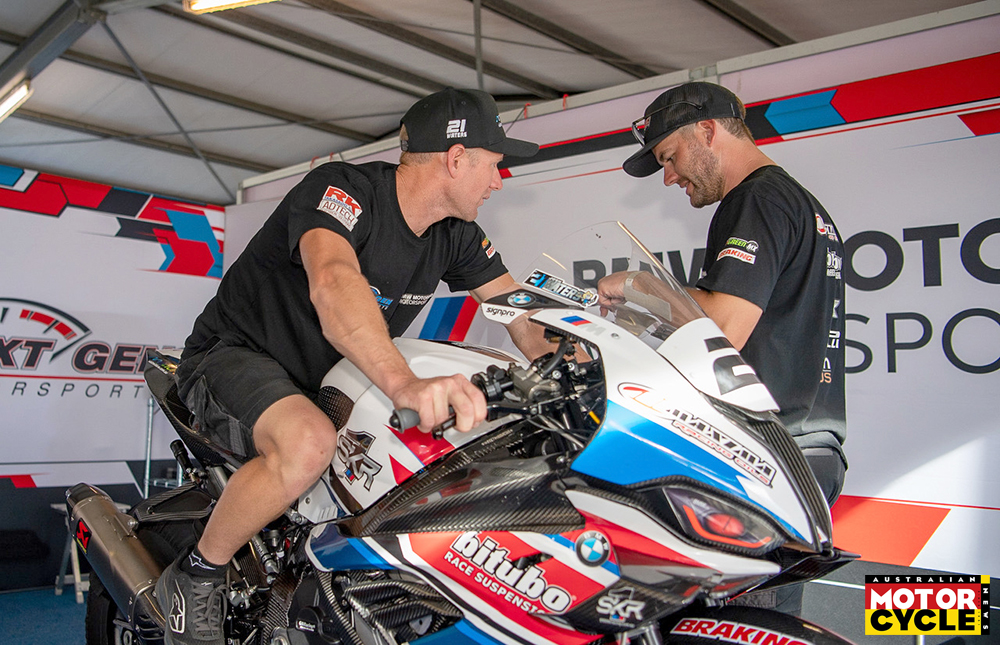
What are your goals for next year?
I’ve already started to plan for Hattah next year, the short turnaround between races is a real challenge. We start Finke pre-running at the end of February, combine that with ASBK commitments with Josh and it’s hard to fit everything in. I want to be on the podium next year at Finke no matter what. Hattah is a little bit different because more of the factory riders race there – but I’m aiming for top five at Hattah.
